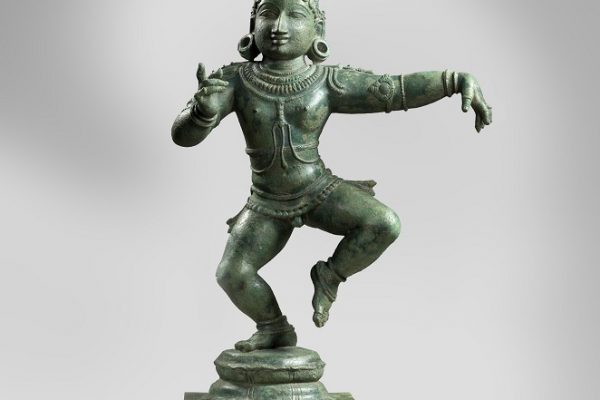
THE National Gallery of Australia has today (July 29) announced it will return 14 works of art from its Asian art collection to the Indian government.
The works include six bronze or stone sculptures, a brass processional standard, a painted scroll and six photographs.
The decision to return the works comes after years of research, due diligence and an evolving framework for decision-making that includes two independent reviews conducted by former High Court Justice Susan Crennan.
NGA director Nick Mitzevich said these actions demonstrated the National Gallery’s commitment to being a leader in the ethical management of collections.
“This is the right thing to do, it’s culturally responsible and the result of collaboration between Australia and India,” he said.
Thirteen of the priceless objects are connected to notorious art dealer Subhash Kapoor through “Art of the Past” and one was acquired from art dealer William Wolff.
Another three sculptures sourced from “Art of the Past” have also been removed from the collection pending research to identify their place of origin before they are repatriated.
Following this, along with the return to India of works in 2014, 2016 and 2019, the National Gallery will no longer hold any works acquired through Subhash Kapoor in its collection.
The gallery has introduced a new provenance assessment framework. If, on balance, it is considered likely that an item was stolen, illegally excavated, exported in contravention of the law of a foreign country, or unethically acquired, the NGA will take steps to deaccession and repatriate.
The Indian High Commissioner to Australia, Manpreet Vohra, said, “The government of India is grateful for this extraordinary act of goodwill and gesture of friendship from Australia,” Mr Vohra said.
“These are outstanding pieces: their return will be extremely well-received by the government and people of India.”
The works being returned are:
Chola dynasty (9th-13th centuries), The child-saint Sambandar, 12th century, purchased 1989.
Chola dynasty (9th-13th centuries), The dancing child-saint Sambandar, 12th century, purchased 2005.
Hyderabad, Telangana, India, Processional standard [‘alam], 1851, purchased 2008.
Mount Abu region, Rajasthan, India, Arch for a Jain shrine, 11th-12th century, purchased 2003.
Mount Abu region, Rajasthan, India, Seated Jina, 1163, purchased 2003.
Rajasthan or Uttar Pradesh, India, The divine couple Lakshmi and Vishnu [Lakshmi Narayana], 10th-11th century, purchased 2006.
Gujarat, India, Goddess Durga slaying the buffalo demon [Durga Mahisasuramardini], 12th-13th century, purchased 2002.
Rajasthan, India, Letter of invitation to Jain monks; picture scroll [vijnaptipatra], c. 1835, purchased 2009.
Lala D. Dayal, India, Maharaja Sir Kishen Pershad Yamin, 1903, purchased 2010.
Udaipur, Rajasthan, India, not titled [‘Manorath’ portrait of donor and priests before Shri Nathji, Udaipur, Rajasthan], unknown date, purchased 2009.
Guru Das Studio, not titled [Gujarati family group portrait], purchased 2009.
Shanti C. Shah, Hiralal A Gandhi memorial portrait, 1941, purchased 2009.
Venus Studio, India, not titled [Portrait of a man], 1954, purchased 2009.
Udaipur, Rajasthan, India, not titled [Portrait of a woman], unknown date, purchased 2009.
Who can be trusted?
In a world of spin and confusion, there’s never been a more important time to support independent journalism in Canberra.
If you trust our work online and want to enforce the power of independent voices, I invite you to make a small contribution.
Every dollar of support is invested back into our journalism to help keep citynews.com.au strong and free.
Thank you,
Ian Meikle, editor




Leave a Reply